Celebrating our 70th Anniversary provides us an opportunity to reflect on our heritage as a law firm and the individuals whose contributions impacted our growth and the clients and community we serve, as well as the legal profession. It is also an opportunity for us to share this history with you, our clients and friends, who have been as much a part of this history as the attorneys who have been privileged to serve you. This is the third of a four-part reflection on our journey as a law firm and of the attorneys who were a part of it.
Increasing Workload and Growth Brings Litigation Attorney James L. Thompson to the Firm
Aware that Jim Miller, Jr. was likely to be leaving the firm soon, and in any event responding to an increasing work load; in the early spring of 1970 Bill Canby started looking with his partners’ encouragement for another associate. He came across a young Marine officer, a graduate of Yale undergraduate and University of Virginia Law School, who was leaving the service and wanted to practice in Montgomery County where he had grown up and gone to high school. Hence the prospect of the association of James (“Jim”) L. Thompson with Miller, Miller & Canby.
Jim Thompson was a great find for the firm. He was intelligent, mature, a leader, self-possessed and articulate. As soon as he was interviewed, the partners knew that he was the person they were looking for to help with the existing workload and, if things worked out as it seemed they would, to bridge the gap to be left by the departure of Jim Miller, Jr. He was offered a position as an associate, and he accepted in the summer of 1970.
Strong Partnerships Make the Firm a Great Place to Work
From 1970 to the present, the firm continued to grow, and the partners and associates continued to prosper from that growth. It isn’t practical in this history of the firm to give the deserved attention and credit to all of the partners and associates who have contributed to its success because there are too many of them. Most would agree that the nucleus over those years was comprised of Bill Canby who came on board in 1961, Bob Burchett in 1966, Jim Thompson in 1970, Lew Schumann in 1973 and Jody Kline in 1974. They set a standard. All, except Bill Canby and Bob Burchett, remain with the firm as of this writing. This says something about the firm itself–it is a good place to work and the partners/shareholders get along, as does the staff.
The Passing of Bill Canby and Retirement of Bob Burchett
Tragically, Bill sustained a fatal accident in September 1994 while vacationing with his wife (Judy) and children. Bill had gone into semi-retirement and took on an “Of Counsel” designation with the firm on January 1, 1993. The survivors in the firm believe that the wisdom that Bill demonstrated in his thirty (30) plus years with the firm has been passed along to those still here who had the good fortune of knowing and working with him.
Bob Burchett retired from the Firm in 1998 after thirty-two (32) years of practice. Both Bill and Bob’s earned retirement years were way too short, but their impact on the Firm and the lawyers they mentored continues on to this day.
Jim Miller, Jr. Returns to Firm from Retirement
Bill’s loss was tempered by the legal ability, dedication and the leadership of the partners who were in place at that time, including Lew Schumann, Jody Kline, Jim Thompson and Bob Burchett. In addition, it was the firm’s good fortune of having Jim Miller, Jr., return in August 1991. After giving his all to service as a judge on the United States District Court of Maryland for sixteen (16) years, Jim decided to retire. After five (5) years of retirement, his mental and physical energy was restored, and he was ready to return to the practice of law doing mediation and arbitration, principally. Although Jim had many opportunities available to him, he decided that what he really wanted to do was return to his roots.
Lew Schumann’s Leadership and Dedication as Managing Partner
Another special note of appreciation and recognition must be given to Lew Schumann who served as the managing partner of the firm for approximately twenty (20) years while at the same time carrying a full case load. He served with wisdom and distinction in both positions. As a tax and business lawyer, he helped numerous clients structure their operations to maximize their profits, cut their taxes and maintain flexibility to deal with contingencies. He also helped clients in estate planning where he could make complex tax regulations simple. During Lew’s management, the firm emerged from the old ways of management that were customary in rural and suburban law partnerships and became a corporation with a structure and a more sophisticated approach to day-to-day and long-term operations. The firm evolved into specialized practice areas, modernized its legal research and improved its filing and record keeping.
An Undeniable Reputation of Legal Advocacy and Success
Throughout its history, the firm and its lawyers have maintained a reputation with the Bench, the Bar, the public and its clients that present members are proud of and will do whatever it takes to maintain. One small example is that four (4) past presidents of the Bar Association of Montgomery County have been lawyers with the firm, even though the firm’s size at this time varied from four (4) to eight (8) lawyers. Also, this was accomplished during the time when to achieve that position it was necessary to win a contested election rather than have the office passed on to a successor who was next in line. Clearly, our fellow lawyers in the County respected our partners and recognized their leadership. Our past presidents are Jim Miller (1969-70), Bill Canby (1977-78), Jim Thompson (1987-88) and Pat McKeever (1993-94). Jim Thompson took it to the next level and was elected President of the Maryland State Bar Association (“MSBA”) after having served on the Board of Governors for three (3) terms and chairman of numerous MSBA committees.
As the firm approached the 1990’s, the future was bright. There remained a strong and dedicated nucleus of old timers surrounded by an equally strong and dedicated group of new arrivals, including both shareholders and associates. The firm was well positioned to carry on its outstanding history of service to the profession and its clients into the next century.
Client Focused. Results Driven.
Some of the keys to the firm’s ongoing success included the quality of the lawyers dedicated to excellent representation of clients, plus the firm’s reputation and the good results which clients received for reasonable fees. They were well satisfied and the firm prospered and our representative clients at that time were very impressive. Some of our representative clients included Sandy Spring Bank, Bank of Bethesda, The Barlow Corporation, The Glen Construction Co., Pumphrey Funeral Homes, The Barrie School, Montgomery General Hospital, Montgomery Mutual Insurance Company, Minkoff Development company, Asbury Methodist Home (Now Village), and several of the major country clubs–Congressional, Bethesda, Manor, Burning Tree, Columbia–plus major developers–Roger Eisinger and Lazlo Tauber, and others. In addition, our ad valorem tax practice grew to include in later years many large retail stores like Sears, K-Mart, Macy’s and Target.
Our prosperity was helped by the significant contributions that Jody Kline made in his area of land use and zoning, where he became one of the most pre-eminent lawyers in Montgomery County in this practice area. Jody was a graduate from Washington & Lee University as an undergraduate, and from the law school. When Bill Canby, also a Washington & Lee graduate, saw that, there was immediate interest and ultimate compatibility. We were fortunate to hire him in 1974. After learning the ropes, he took off and the rest is history. Not only did he do excellent work, but his clients came back and referred other clients to him and to the firm. This took place prior to the time that lawyers’ advertising was permitted.
The Evolution of Specialized Law Practice
During the 1970’s, the firm evolved in several important respects. First, we began to evolve from a general practice law firm where each lawyer was expected to undertake legal representation in every area of law practice, to becoming a more specialized law practice in the late 70’s and early 80’s focused on all issues touching real property (land use, zoning, eminent domain, ad valorem tax appeals, sale and lease transactions, and financing),the related business needs of clients (business and tax, and estates and trusts) and litigation that flowed from these practice areas.
Our specialization evolved from the specific legal talents and abilities of our attorneys, as those who were excellent in land use and zoning focused their practice in that area and other attorneys with interests and skills in other areas became experts in those fields. Other areas of practice were eliminated, such as criminal law and, after Bob Burchett’s departure, domestic relations. Because of these changes, our attorneys became more focused and rose to the top of their practice areas. This resulted in professional recognition as all of our nucleus lawyers became A-rated lawyers, and then, as the various lawyer rating systems proliferated, all became recognized as some of the finest attorneys in their respective practice areas.
Jim Thompson was elected to be a member of the American College of Trial Lawyers which is a limited to the top one percent (1%) of trial lawyers in the United States. As the litigation department grew, the decision was made to expand the lawyers in the firm with those abilities, and we were fortunate to acquire Joseph P. Suntum as a new associate in 1988. After his judicial clerkship and his service in the Public Defender’s office where he earned a reputation as an outstanding trial advocate Joe joined the firm and has become one of our finest trial lawyers. He successfully tried multi-million dollar civil cases concerning a variety of legal and factual issues—and defended those trial victories in the courts of appeal. Now he has focused those talents in the field of Eminent Domain, where he represents property owners whose property is acquired by government for public projects and uses. Because of his expertise and the excellent results he’s achieved, he has been selected by the Owner’s Counsel for America to be its only Maryland member–the best in Maryland.
This expansion paid off, as did our trial successes and our appellate work. During the 1970’s and 1980’s, the firm had over fifty (50) appellate cases in which members of the firm , appeared as counsel before the Courts of Appeal and argued cases which set precedent in numerous areas of the law, among them are: Supervisor of Assessments vs. Ort Children Trust IV, 294 Md. 195 (1982) (because capitalized income was a legitimate basis for determining a property’s full cash value, the tax court did not err in reducing assessed value of property to reflect a long -term below-market lease); Lerner vs. Lerner, 306 Md. 771 (1986) (preliminary injunction against freeze-out of minority shareholder’s interest was proper as he faced irreparable harm if such a freeze-out and other complications arising which could be avoided by maintaining the status quo); Mayor of Baltimore City vs. Valsamaki, 397 Md. 222 (2007) (when the trial court properly denied the city’s petition for quick-take condemnation of the Valsamaki property because the city failed to articulate the reasons why it was necessary to have the property for immediate possession and title; hence, quick-take was not appropriate); County Federal Savings & Loan Association vs. Equitable Savings & Loan Association, 261 Md. 246 (1971) (a savings and loan association reforming under Maryland law was property allowed to keep its District of Columbia branches where they served a significant number of Maryland customers whose best interest was served by their continued operation); Supervisor of Assessments vs. Asbury Methodist Home, Inc., 313 Md. 614 (1988) (Asbury apartments were not entitled to tax exemption because they were not actually used for charitable purposes and the test for tax exempt status was whether the property was necessary for charitable purposes); and Charles Browning vs. Commission of Internal Revenue, 109 T.C. 16 (1997) (charitable contribution of farmland development density to preserve farm preservation in Howard County was tax deductible over and above price paid by County).
As practice areas grew new lawyers were brought in in each of the major practice areas: Litigation, Zoning and Land Use, Business, Taxation and Estates and Trusts and Real Estate Transactions and Planning adding depth and providing continuity into the future in each practice area. As time passed and the firm evolved, we developed a loose-knit team at not only the partnership and management level, but also at the level of associates. In this regard, the firm has experienced several things which many suburban firms did not. For example, MM&C has never lost a partner or shareholder in an adverse situation where the person was fired or terminated for cause or left because he or she was unhappy here. Also, the partners or shareholders put the firm first ahead of selfish and personal interests, and this was a major contribution to firm unity. In consideration of these several factors and the pleasant work environment, the attorneys and the staff find MM&C a good place to work. Hence, several employees have been here for more than 40 years and lawyers and, staff alike, have made the firm a professional home for their entire work careers.
The quality of the firm and its continued excellence depends upon the quality of its lawyers. We were fortunate in the ‘70s and ‘80s to have attorneys on board who could pick up the practice areas and continue the standard of excellence set by Jim Miller, Jr., and Bill Canby.

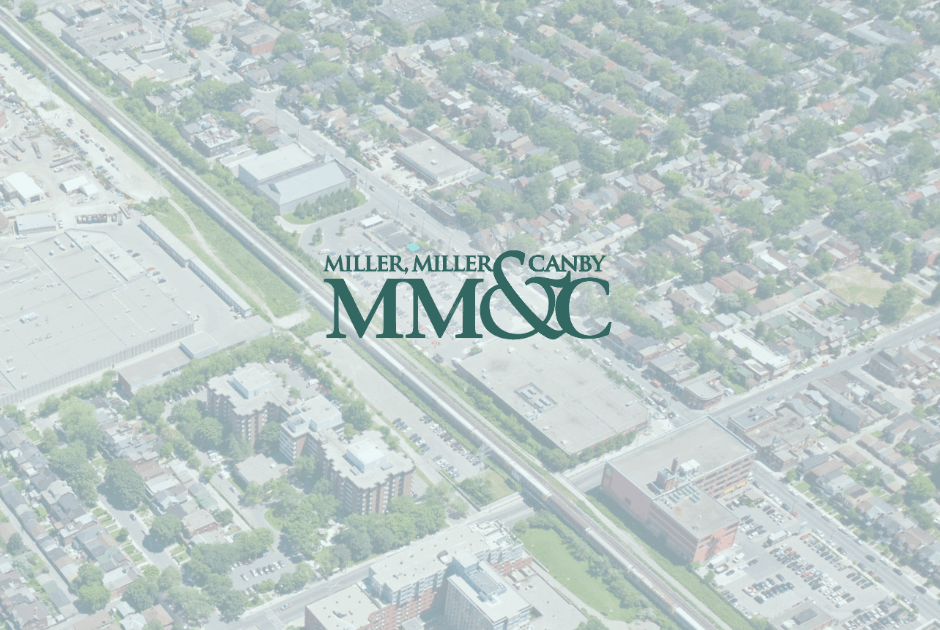


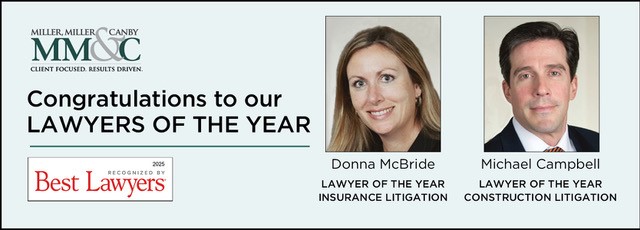

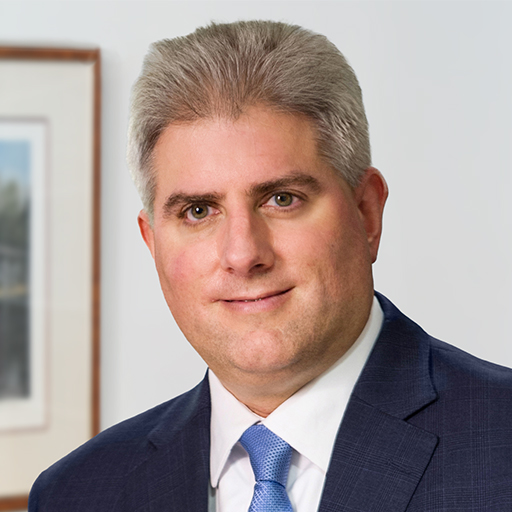
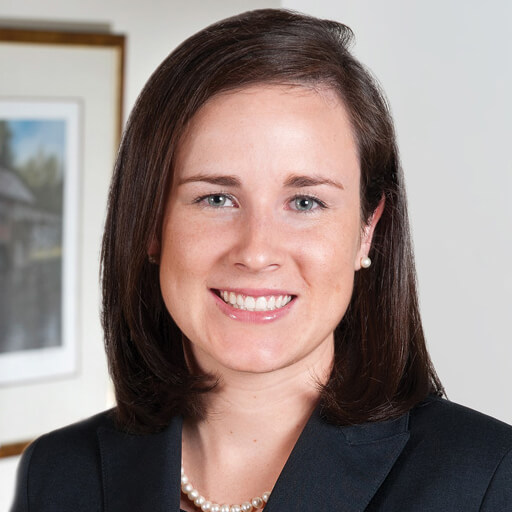
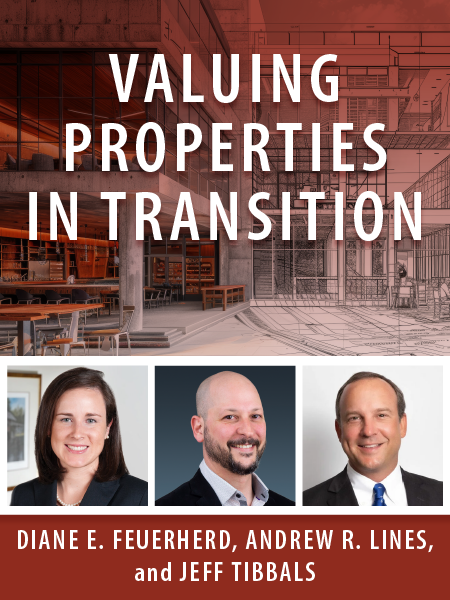
Share this Article: